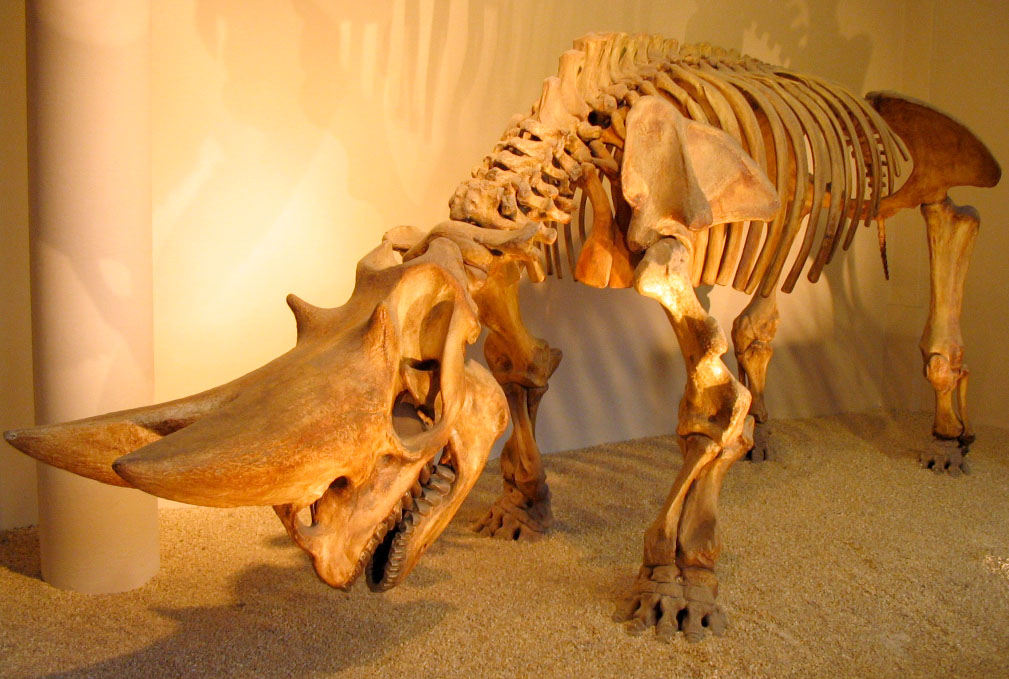- Arsinoitheriidae
Taxobox
name = Arsinoitheriids
fossil_range=Late Eocene -Early Oligocene

image_width = 200px
image_caption = "Arsinoitherium zitteli"
regnum =Animal ia
phylum = Chordata
classis =Mammal ia
ordo = †Embrithopoda
familia = †Arsinoitheriidae
familia_authority = Andrews, 1904
subdivision_ranks =Genus
subdivision =
* "†Arsinoitherium "
* "†Crivadiatherium "
* "†Palaeoamasia "Arsinoitheriidae was a family of
mammal s belonging to the extinct orderEmbrithopoda . Remains have been found in theMiddle East ,Africa ,Asia andRomania . When alive, they would have had a great, albeit very superficial resemblance to the modernrhinoceros . Despite this, they were not closely related to rhinoceri (or any other perissodactyl, for that matter), instead being more related tohyrax es,elephant s, anddesmostylia ns.Fossil Record
Arsinoitheres first appear in the fossil record during the Middle Eocene, with the teeth of the primitive "
Palaeomasia " found in Turkey [Rose, Kenneth D. & Archibald, J. D.: "The Rise of Placental Mammals" (p. 266). JHU Press, 2005 ISBN 0801884721] . The last genus is "Arsinoitherium ", itself, being first found in the Latest Eocene of the Fayum, then disappearing from the fossil record altogether before the end of the Early Oligocene. "Crivadiatherium " is known from some teeth found in the Romanian province ofTransylvania in the same Late Eocene deposits where the western-mostbrontothere , "Brachydiastematherium " was found.Etymology
The name honors the wife of
Ptolemy II , QueenArsinoe II of Egypt , where the first fossils of "Arsinoitherium " were found near the ruins of her palace.References
External links
* [http://paleodb.org/cgi-bin/bridge.pl?action=checkTaxonInfo&taxon_no=43310 The Paleobiology Database]
* [http://www.fmnh.helsinki.fi/users/haaramo/Metazoa/Deuterostoma/Chordata/Synapsida/Eutheria/Basal_Ungulata/Embrithopoda.htm Mikko's Phylogeny Archive]
Wikimedia Foundation. 2010.
